Let’s say that you’ve got a good, old two-stroke engine in your air-cooled or vintage two-stroke dirtbike and you ride it two times a month. Mechanically, you know it’s sound and you don’t ride it hard enough to break things. You’ve had the bike for quite a few years, and it’s been very reliable and a lot of fun.
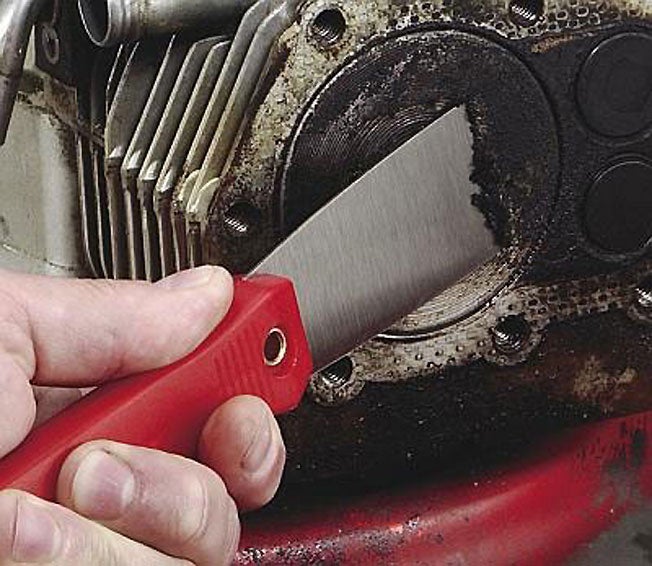
Then, one day it starts to run a little crummy. So you take the carb apart and check for water crud in there, and everything’s checks out okay. Then you pop a new plug in and take it for a ride. Still weird. In desperation, you double check the air filter and note that it’s clean.
Every once in a while, you take the bike out for a spin and it keeps running a little bit worse each time. What in the world could be? In desperation, you take the head off just in case something happened to the top end. One quick peek at the top the piston tells you the whole story. The bike is carboned up. A thick layer of black crud is on top of the piston.
Serious dirtbike racers rarely experience heavy carbon buildup, because they pull the motor down frequently, and removing carbon is a matter of course. However, the casual rider and play racer often performs the absolute minimum maintenance on his bike, and is more likely to suffer the effects of too much black stuff building up.
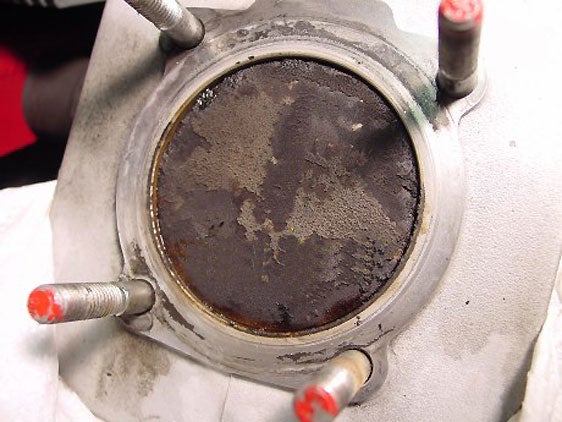
The most notable symptom is a loss of power. In short, you’ll just want to push your old two-stroke into the weeds because it’s running so poorly. It might also become hard to start, and/or heat up and continue running after the motor is shut off. To an untrained troubleshooter, the symptoms indicate that the timing has slipped or the seals are leaking.
Carbon in two-stroke engines accumulates in several places: the combustion chamber, piston crown and head, exhaust port, in the muffler, or expansion chamber. It is a residue from the lead (if you run leaded fuel) and other chemicals that are in gasoline and what’s left of your two-stroke oil. Two-strokes with oil injection systems use their oil more efficiently than machines using a premix, so they need not be checked as frequently, but are still likely to require that you remove carbon perioducally. For all bikes, the amount of carbon buildup is dictated, and can be controlled to an extent, by the amount and type of oil used. Chemical-based lubricants generally run the clearest. Bean (castor) oil leaves the most residue, and the petroleum-based oils are somewhere in between. Whatever type of oil you prefer, buy oil that is for two-stroke motorcycles. It is usually formulated to run cleaner. Don’t go into a filling station and just buy a can of oil.
Once you figure out that your ailing two-stroke engine suffers some excess carbon, don’t just sit there and pat yourself on the back. The worst is yet to come; the crud must be removed. We know some riders would rather change 18 flat tires than have to remove carbon buildup from inside their engines. That’s understandable. It’s messy, boring and time-consuming.
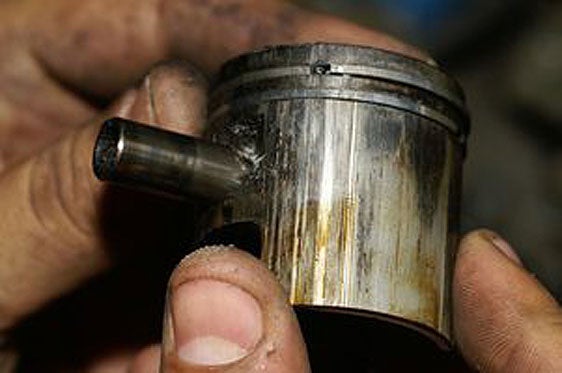
Let’s begin. Remove the cylinder, piston, head, and expansion chamber from your machine. First, let’s work on the chamber. Crud will have accumulated inside the chamber, so there’s really a problem getting to it. Scrape off the carbon in the head pipe and the muffler for starters. Use a long screwdriver. If it has been a long time since the bike has been decarbonized, the carbon may have to be loosened with heat.
There are two options. If you have access to an acetylene torch, tune the flame until it is long in blue-yellow, and run it down the head pipe and chambers far as you can without burning the paint off, or melting the metal.
Another method use to remove carbon buildup, which I hesitate to mention, is to pour flammable liquid in the chamber and slosh it around. Then put a match at the end of the pipe to make the vapor flash. Benzene, charcoal lighter, or kerosene will do. Be very, very careful when using this method. It is no fun thing to have little bits of chamber embedded in your forehead. Also, please remove the chamber from the bike before attempting any heavy-duty pyrotechnics.
After either torching or burning up of the chamber, rap the pipe with a 2×4 for a while, and carbon should fly out. Check out the carbon residue on a newspaper to see how much was hidden in the chamber.
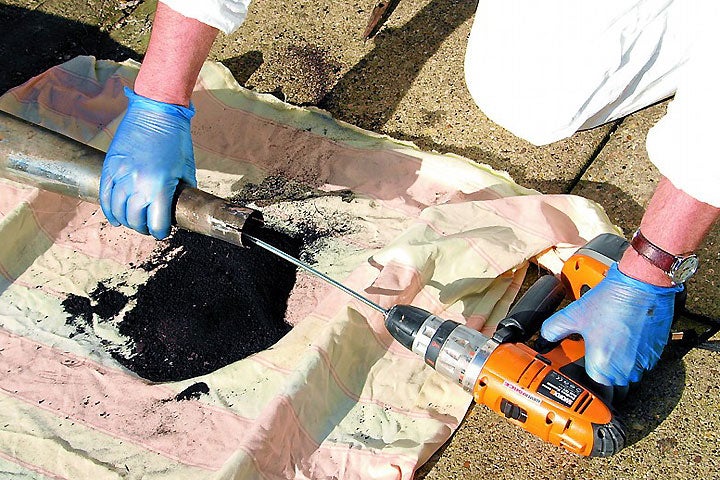
Some machines have removable baffles, in which case the baffle should be removed and then be cleaned separately. The carbon on the cylinder head can be scraped off with a well-worn screwdriver, a butter knife, or what have you. Avoid scratching the surface of the cylinder head or piston.
Another method popular among the lazy folks, is to use a rotary wire brush chucked up in an electric drill. Deposits in the exhaust port usually are very hard to remove because of the various nooks and crannies that are hiding places. Carbon that has been in the engine for a long time and/or subjected to extreme heat will not scrape off very easily. It can be softened by immersing the part to be cleaned in a detergent motor oil overnight, or longer if required. Even then, the carbon tends to stick to rough services. So if you do a rush job and leave bits of carbon on the parts, they will attract residue very quickly and undo your cleanup job that much faster. The same goes for any gouges that you might put in with a scraping tool.
In cases where the carbon buildup is very extreme, there will often be a few chunks that simply won’t come off using the above methods. Use number 400 sandpaper to get them off, but do it gently. Scratches that were administered by a scraping tool may also be removed with the sandpaper.
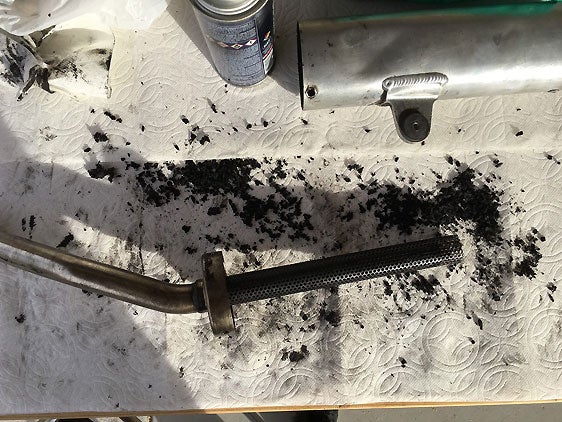
Most folks find it easier to work on the piston when it’s left in place. The piston is brought up to top dead center in the cylinder for easy scraping. The only objection I have to using this method is that particles of carbon can easily find their way into the crankcase. Carbon is very hard and can do bad things to bearings, etc. Don’t get carried away to force the carbon out of the cases with too much air pressure.
After all the carbon is removed to your satisfaction, sand the surfaces lightly; this will effectively prevent carbon from building up quickly. Sand with number 400 paper, then number 600, both of them wet. After you’ve achieved a mirror finish, take a moment to admire your reflection in the parts and then button everything back up because your done.
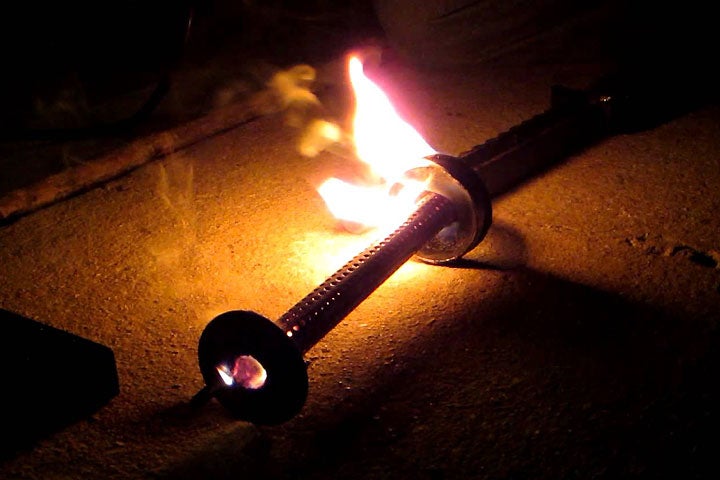
If you have removed the carbon sufficiently, your old two-stroke should reward you with much better performance.
 Your Privacy Choices
Your Privacy Choices